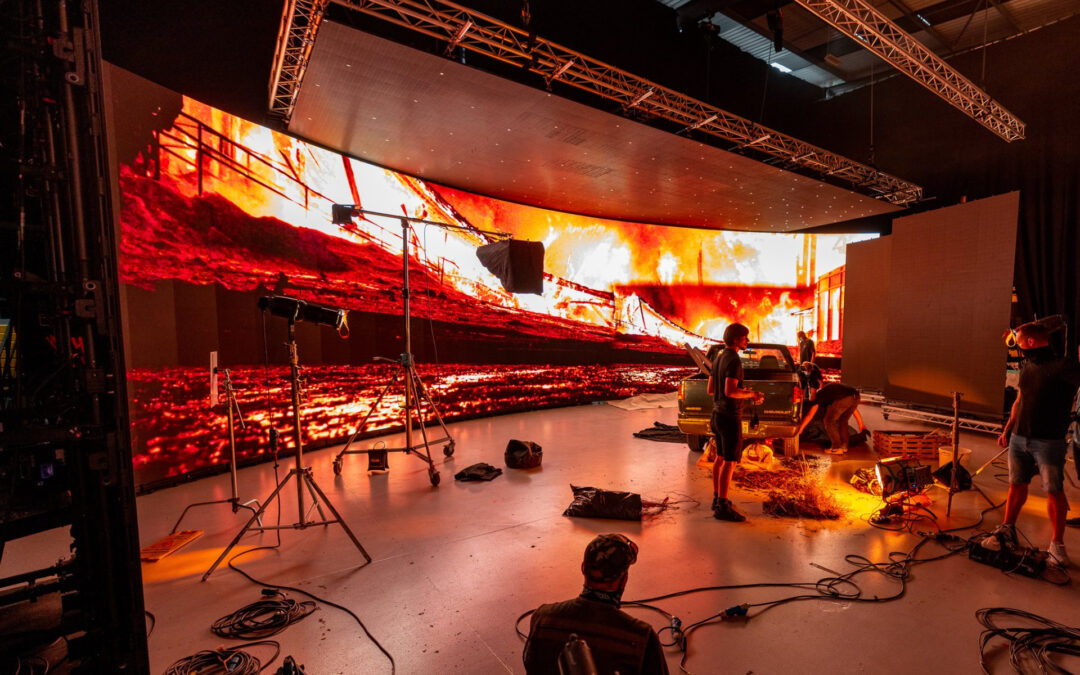How Technology is Transforming Filmmaking
In recent years, advancements in technology have revolutionized the way films and TV shows are made, offering filmmakers new tools and techniques to bring their creative visions to life. One of the most exciting developments in this space is the rise of virtual production, a groundbreaking approach that blends traditional filmmaking with cutting-edge digital technology. In this blog post, we’ll explore the growing popularity of virtual production and its impact on the future of filmmaking.
Virtual production refers to the use of digital environments, virtual sets, and real-time rendering techniques to create immersive visual effects and enhance the production process. At its core, virtual production allows filmmakers to shoot scenes in a controlled virtual environment, eliminating the need for physical sets and locations. This innovative approach offers filmmakers greater flexibility, efficiency, and creative freedom, while also reducing costs and environmental impact.
One of the most high-profile examples of virtual production in action is the hit Disney+ series, “The Mandalorian.” Directed by Jon Favreau, the show utilized groundbreaking technology known as StageCraft, developed by Industrial Light & Magic (ILM), to create photorealistic virtual sets using LED screens and real-time game engine technology. This innovative approach allowed filmmakers to shoot scenes in a dynamic, immersive environment, seamlessly blending live-action footage with computer-generated imagery.
Beyond “The Mandalorian,” virtual production is quickly gaining traction across the film and TV industry, with filmmakers embracing the technology to explore new storytelling possibilities. From big-budget blockbusters to independent productions, virtual production offers filmmakers the ability to create stunning visual effects, realistic environments, and immersive worlds that were previously unimaginable. As the technology continues to evolve and become more accessible, we can expect to see even greater innovation in the years to come.
While virtual production holds tremendous potential, it also presents unique challenges and considerations for filmmakers. From technical complexities to creative limitations, adopting virtual production requires careful planning, collaboration, and expertise. Filmmakers must navigate issues such as motion tracking, lighting consistency, and actor interaction to ensure a seamless integration of live-action and digital elements.
As we look to the future of filmmaking, virtual production stands poised to redefine the way stories are told and experiences are crafted. With its ability to merge the physical and digital worlds, virtual production opens up a world of possibilities for filmmakers, allowing them to push the boundaries of creativity and imagination. Whether it’s creating epic fantasy landscapes or realistic historical settings, virtual production offers filmmakers the tools they need to bring their wildest dreams to life on the big screen.
Conclusion:
The rise of virtual production represents a paradigm shift in the world of filmmaking, ushering in a new era of creativity, innovation, and storytelling. With its ability to blend the real and the virtual, virtual production offers filmmakers unprecedented control over the filmmaking process, empowering them to create immersive experiences that captivate audiences like never before. As technology continues to evolve and filmmakers continue to push the boundaries of what’s possible, we can expect virtual production to play an increasingly central role in the future of cinema and television.
Lights, Camera, London 2024
Lights, Camera, London: The Vibrant Pulse of Filmmaking in 2024 Exploring the Dynamic Film Scene and Creative Energy of England's CapitalIn 2024, the bustling metropolis of London continues to stand as a beacon for filmmakers, offering a rich tapestry of locations,...
UK Introduces 40% Tax Relief…
UK Introduces 40% Tax Relief for Films Budgeted Up to £15m in Bid to Reignite Indie Sector The United Kingdom's film industry has long been celebrated for its creativity, innovation, and diverse range of voices. However, in recent years, independent filmmakers have...
Join our Newsletter
If you have any desire to get the PSAs or the Production guys to sign up for an email list, this is where we’d do it. We can use Mailchimp if you wish. Just let me know. Happy to set it up for you.



